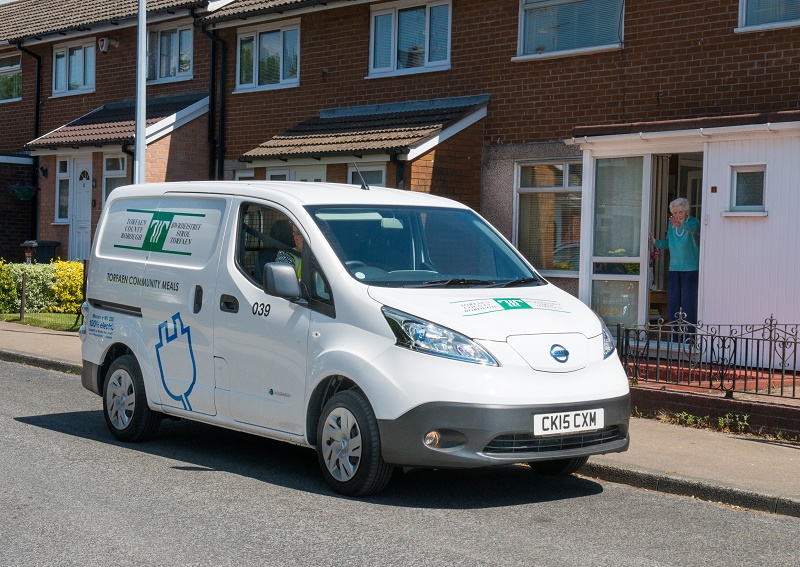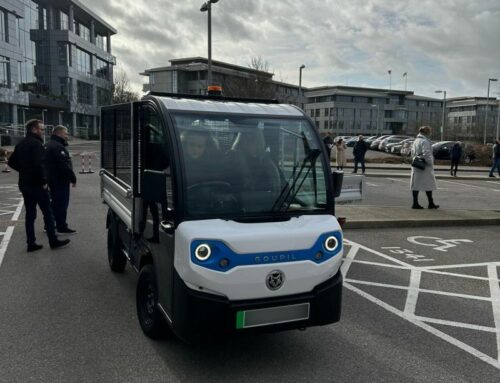NEW Mayor Sadiq Khan’s plan to fast track a new London Ultra Low Emissions Zone could hit businesses – and van users in particular. So to future-proof your next van purchase a good start is to cut emissions and here we’ve got 5 lowest CO2 vans.
As we reported in Van users in firing line of new Mayor’s London emissions clampdown, the Freight Transport Association (FTA) has said that the plans outlined by the new London Mayor could have three major possible impacts on business.
Firstly, there’s expected to be an increase in the Congestion Charge, likely to impact vans and lorries. Secondly, vans and lorries across inner-London would have to be Euro Vl/6 compliant – possibly as early as 2018. Finally, the proposal would require lorries to be Euro 6 compliant across all of Greater London as early as 2020.
So how can you future-proof your next van purchase? Well a good start is to reduce the emissions and we’ve got 5 lowest CO2 vans to choose from.
5 lowest CO2 vans: Renault Kangoo ZE 0g/km
Vans are as bigger polluter as cars, yet it has taken longer for LCV manufacturers to get behind electric power. This zero emission, all-electric Renault Kangoo is the first and with no engine is a refined drive.
The Kangoo might weigh quite a lot with 260kg of extra batteries, but the payload is credible at 650kg and acceleration to 30mph feels particularly rapid – perfect for urban environments although the top speed is 81mph. Limitations are the range, the six-hour charging time and the fact you’ll have to pay £60 extra per month to rent the battery. The existing model’s range is 106 miles in the NEDC calculations, and Renault Pro+ is raising this to 168 miles NEDC (124 miles in real world driving conditions) – 50% further with a new motor and battery package.
5 lowest CO2 vans: Nissan e-NV200 0g/km
The e-NV200 is almost a commercial version of the Nissan Leaf passenger car, as they share parts. However, just because they share parts, don’t go thinking this isn’t a capable van, as the e-NV200 has a 770kg payload – beating its conventionally-powered sister. It has a load bay of 2.04 metres and the 1.22-metre width means the load bay can swallow two Europallets.
The e-NV200 feels quick off the mark too with its torque (254Nm) available right from the first moment you put your foot down. So this electric Nissan van feels quick and nippy in town. The only limitations are the 106-mile range, although that will probably be enough for most, and the up-to-8-hour charge time.
5 lowest CO2 vans: Ford Transit Courier 1.6 TDCi 95PS Trend 97g/km
The baby Transit not only looks good, but is great to drive, has a surprisingly generous 1,620mm load length and has a comfortable, car-like interior. Choose the 1.6 Duratorq TDCi version and the Transit Courier is an efficient choice, with 76.3mpg fuel figures and 97g/km emission figures.
The Transit Courier isn’t the perfect solution however, as you’ll need to specify the optional auto-start-stop and 62mph speed limiter for this Ford van to achieve these efficiency figures.
5 lowest CO2 vans: Fiat Fiorino 1.3 Multijet 100g/km
The new Fiat Fiorino has plenty of interior space, an impressively spacious load area of 2.8 cubic metres and a payload of up to 660kg and importantly new Euro 6 engines.
Pick the 1.3 Multijet diesel with 80hp EcoJet, which employs fuel-saving technologies such as a Start & Stop system, a ”smart” alternator and a variable displacement oil pump. Appearing for the first time on the new Fiorino, it is paired with a Comfort-Matic robotised transmission to achieve 74.3 mpg on the combined cycle with emissions of 100 g/km CO2 , meaning a fuel saving of up to 14% compared to the manual transmission without EcoJet.
5 lowest CO2 vans: Mercedes Citan 111 CDI 115g/km
The first compact van from Mercedes is in fact a rebadged and re-engineered Renault Kangoo. That shouldn’t put you off as the Renault is a fine base and the Mercedes drives well and is available in a variety of different versions.
Most efficient engine in the Citan is the 111 version of the smooth and refined 1.5-litre CDI diesel, which even in the longest LWB body has emissions of just 115g/km and consumption of 64mpg. Downsides are that rivals offer a keener drive and have a better payload than the 810kg maximum of this Mercedes.












Leave A Comment